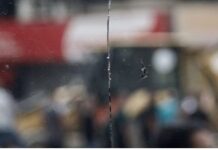James North
Mondoweiss / November 27, 2020
A nuclear scientist was just assassinated inside Iran, probably by Israel with Trump administration connivance — but, so far, The New York Times is distorting the news and ignoring the probable and dangerous Israeli/Trump motivation for the killing. The scientist, Mohsin Fakhrizadeh, was shot dead in an ambush in northern Iran. The Times report did say that “three intelligence officials” attributed the attack to Israel, but the paper barely explored the connection further.
The Times started off its misleading coverage by asserting that Fakhrizadeh “was seen as the force behind Iran’s nuclear weapons program.” John Ghazvinian, a respected Iranian-American historian and former journalist (his book, America and Iran: A History, 1720 to the Present, will appear in January 2021), sharply challenged the Times’s claim:
You are welcome to have whatever suspicions you want about Iran’s nuclear program. But words matter. And calling it a nuclear “weapons program” turns a suspicion into an accusation. That is not what journalism is supposed to do.
Here are the facts: Iran says its nuclear program is peaceful, signed an exacting agreement in 2015 that included rigorous inspections by outside authorities, and was in total compliance until Donald Trump unilaterally pulled the U.S. out in May 2018.
The Times’s online report continues with its bias. The paper says, “The assassination took place amid post-election tensions between Iran and the United States.”
This dishonesty would be only laughable if there were no risk of greater tragedy. The Times makes it sound like “post-election tensions” are just arising out of nowhere, for no reason. The truth is: Israel and the U.S. have been carrying out a violent sabotage campaign inside Iran this year, which has so far included the destruction of power plants, aluminium and chemical factories, a medical clinic, and 7 ships at the port of Bushehr. What’s more, the U.S. Navy recently provocatively sent the aircraft carrier Nimitz through the Straits of Hormuz, the first capital ship ordered into the Persian Gulf since last year.
No one is asking the Times to state as absolute fact that Israel and the U.S. are staging this violent campaign to goad Iran into retaliating. But you can find plenty of genuine experts who make that argument, and the paper owes it to its readers to report their views. Here’s one of them, another knowledgeable Iranian-American scholar, Trita Parsi:
Conducting attacks in Iran has few downsides for Israel right now, Either Iran lashes out and sparks a broader conflict that sucks in the US, bringing about a US-Iran confrontation that Netanyahu long has sought. [Or] if Iran sits tight and waits out the Trump presidency, Israel will not have lost much, as Trump has clearly either given Israel the green light to attack Iran or at a minimum refuses to impose a cost on Israel for dragging the US to the brink of war with Iran. Either way, the assassination (and other likely future attacks) will likely harden and complicate — if not hinder — the Biden team’s attempts to revive diplomacy. That serves Netanyahu’s interest as well.
Parsi ends by warning:
Be prepared for a very bumpy ride till Biden’s inauguration. And if it turns out that Israel was behind the assassination, have no illusions about Netanyahu’s desire to drag the US into another endless war in the Middle East. . .
Again, The New York Times is not required to treat Trita Parsi’s analysis as proven fact. But it should be relaying his views. Especially as its American readers could soon find out that our fellow citizens in the U.S. military are involved in lethal combat with Iran.
UPDATE: The former CIA Director, John Brennan, just tweeted this:
I do not know whether a foreign government authorized or carried out the murder of Fakhrizadeh. Such an act of state-sponsored terrorism would be a flagrant violation of international law & encourage more governments to carry out lethal attacks against foreign officials.
James North is a Mondoweiss Editor-at-Large, and has reported from Africa, Latin America, and Asia for four decades; he lives in New York City













